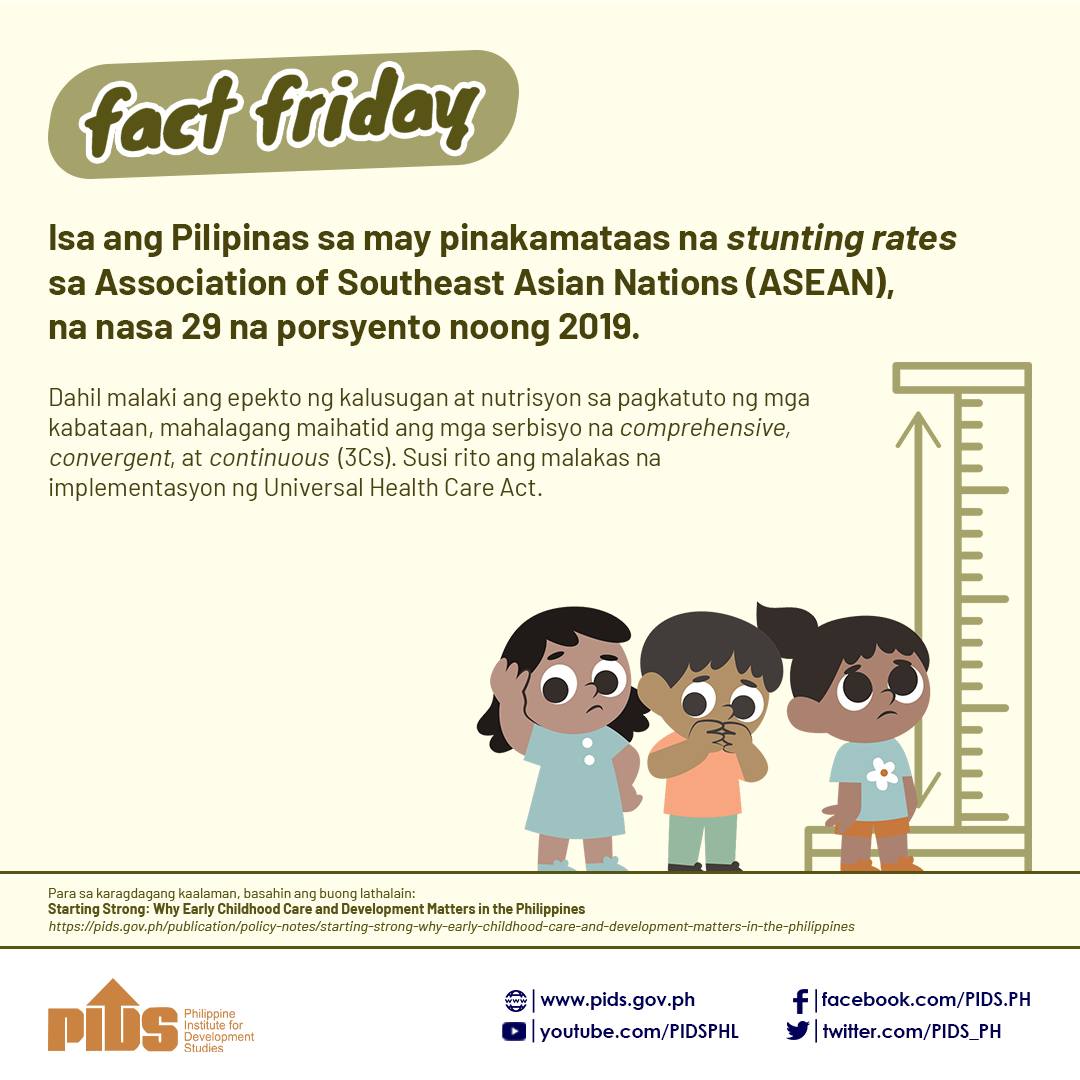FILIPINOS cannot enjoy the supposed benefits of rice tariffication until early next quarter, according to the National Economic and Development Authority (Neda) and local economists.
Socioeconomic Planning Secretary Ernesto M. Pernia told the BusinessMirror the P2- to P7-per-kilogram reduction in rice prices could be felt around March or April or even later, depending on the supply and demand for rice.
Neda Undersecretary for Planning and Policy Rosemarie G. Edillon said the lag time could even stretch to the last part of the second quarter or in the third quarter. The impact on agriculture productivity, she added, could take even longer at around one to two years.
“[Reduction in rice prices will be felt] when supply from tariffied imports, as opposed to NFA’s [National Food Authority]MAV [Minimum Access Volume] imports, matches or exceeds demand for rice,” Pernia said via SMS on Sunday.
Edillon said others factors that could affect the impact of the new law on rice prices include global supply and demand. She said the estimate of a P2- to P7-per-kilogram reduction of rice prices is based on global prices, a tariff of 35 percent, and logistics costs.
However, under the newly signed law, tariff rates can be adjusted by the President. Edillon said this can happen when there are extreme weather events, such as a bad case of El Niño.
Alyansa ng Industriyang Bigas (Anib) Founding Chairman Robert Hernandez said he supports the Neda’s pronouncement that the effect of the rice tariffication law on the prices of the staple could be seen by March or April.
Port congestion, logistics woes
However, Hernandez cautioned that the present port congestion, particularly at the Manila International Container Terminal (MICT), could increase importers’ total costs, which would effectively add on to the retail value of the staple.
Hernandez said Anib applied to import 10,000 metric tons (MT) of rice under the NFA’s out-quota program but they have already faced problems in unloading 10,000 MT of the volume in the MICT due to port congestion.
The 10,000 MT imported by Anib arrived on February 9 but has yet to be unloaded at the MICT and the group will soon incur additional costs due to demurrage, according to Hernandez.
Due to the problem, Anib was forced to divert the remaining 380 containers or about 9,500 MT of rice, which are yet to be imported, to Subic port for unloading there in order to avoid additional costs in MICT, he added. However, Hernandez said the change in port of discharge would still entail them additional costs, which would be added on to the price of the bag imported, due to more expensive trucking costs.
“The trucking costs of transporting the rice from Subic port to our Bocaue warehouse would be double or even triple the trucking cost if it would be unloaded from MICT,” he said.
“[Because of the higher trucking costs] we would be incurring additional costs of P10 per bag. But [the additional cost] would be even higher if our containers stay in MICT, so it is better to divert the remaining containers now to Subic [to cut additional costs],” he added.
Hernandez urged the government to address the port congestion concerns in MICT, especially with the anticipated influx of imported rice abroad. Any delays in unloading would mean higher price of rice as importers would just pass on the additional costs they incurred, plus prolonged unloading time could cause quality of the staple to deteriorate, he added.
“In the rice business, timing is of the essence. We might lose clients if we missed to supply them on the right time. When there is demand then you should have the stock. If you could not supply them right away then they might find another supplier,” Hernandez said.
However, Edillon said the government expects the port congestion problem to be “easily resolved.”
She said rice importation is an easy fix since importers can get their shipments from other ports nationwide. Edillon said the inspection required for rice shipments is not as complicated as other goods.
Special Customs window
House Committee on Agriculture and Food Chairman Jose Panganiban Jr. added that there was a provision in the newly signed law that will allow the Bureau of Customs (BOC) to open a special window for rice importation.
Rice imports will be part of the BOC’s National Single Window program, which seeks to facilitate trade transactions 180 days from the effectivity of the law in accordance with Executive Order (EO) 482.
The Philippines National Single Window will facilitate trade through efficiencies in the Customs and authorization processes. Strongly supported by the Office of the President and mandated to be implemented via EO 482, the NSW will allow single submission and accelerated processing of applications for licenses, permits and other authorizations required prior to undertaking a trade transaction.
“We can use other ports, especially if its rice which only requires one kind of inspection, so it can be processed easily. I think it [port congestion] can be resolved immediately, there are alternatives, [there are] solutions that we can suggest, recommend,” Edillon said.
Depends on IRR
Economists such as University of Asia and the Pacific School of Economics Dean Cid Terosa and Philippine Institute for Development Studies Senior Research Fellow Roehlano Briones said the impact of the tariffication will also depend on the government’s efforts in crafting the implementing rules and regulations (IRR).
Terosa hopes the IRR will be completed before the dry season. “There will definitely be a lag. Given the urgency of the bill, I hope the IRR to be processed before the start of the dry season.”
Briones, for his part said, said the content of the IRR will be crucial. He said that if the National Food Authority (NFA) will still control the importation at least during the transition period, this will reduce the impact of the tariffication law on rice prices.
Meanwhile, Action for Economic Reform (AER) Coordinator Filomeno Sta. Ana III said that, while there will be transition problems, the impact of the rice tariffication is already being felt with commodity prices declining.
Many economists chimed in on the issue and even extended their congratulations to the President’s economic team for passing a law that has languished in Congress for 30 years.
“[The rice tariffication law] will manage inflation expectations. In fact, food inflation has already slowed down,” Sta. Ana told the BusinessMirror.
The landed cost of a 50-kilogram bag of imported rice with 5-percent brokens from Vietnam is about P1,650, while those sourced from Thailand are priced at around P1,700 per bag, Hernandez said. This means that rice that is 5-percent brokens from Vietnam is about P34 per kilogram, while those from Thailand is around P33 per kilogram at wholesale, Hernandez added.
Based on the list published by the NFA on its web site about 180 farmers cooperatives, organizations, businesses and private traders have applied to import rice —amounting to about 1.185 million metric tons under its out-quota program. Of the total applied volume only around 55,134 MT of imported rice has entered the country, the NFA list as of February 11 showed.












